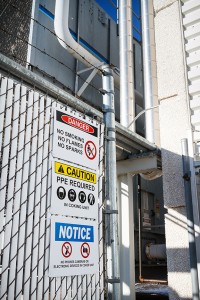PPE should be considered the last line of defense when it comes to protecting workers from the unavoidable hazards of their jobs, but let’s face it many companies rely on PPE to get the job done. When selecting, training your workforce and implementing a proper PPE Protection Plan, make sure you have answers to all of the important questions before making any decisions.
Q: What are critical components to any successful PPE program?
A: A successful PPE program starts with a proper assessment of the hazard area to ensure that your selection of PPE is correct. While all areas of your facility should be assessed on a regular basis, if there is one in particular that has a high number of accidents and injuries and requires PPE while performing task, start with a hazard assessment to pinpoint an exact solution. Then move on to selecting the right PPE. Not all PPE is created equally make sure that the specification needed for the job are met by the piece of protective wear that you are selecting. Once your PPE is selected be sure to train your workers on its importance, the proper way to use it, and follow up with fit tests, proper care, and inspections to make sure that if the quality of the PPE deteriorates that it is replaced in a timely manner.
Q: How often should PPE programs be updated?
A: At the very least your PPE program should be audited and updated on an annual basis to remain in compliance with OSHA regulations. However, many safety authorities recommend making regularly scheduled updates throughout the year or as needed.
Q: Does PPE have to be tested/inspected?
A: Outside of annual updates, PPE must be regularly examined by a qualified worker to make sure that it is still performing to the standard it should be as stated on manufacturer labels. Simple maintenance should be done by the user such as cleaning and proper storage.
Q: How should PPE be stored?
A: All PPE does not have the same storage instructions. As a rule, the specific piece of PPE your workers are using should be stored according to the instructions that came with it. Depending on the type of PPE if not stored properly it could deteriorate more quickly due to exposures to elements like dirt, sun, heat, cold etc.
Q: Is it ok to share PPE?
A: In general it is not a good idea to share PPE among coworkers. Outside of the obvious issues around the spread of germs and infectious disease, PPE often requires fitting it to the specific user. Unless specifically stated in manufacturer instructions it is advised against sharing PPE. Only having one user will also help in keeping clear maintenance and replacement records.









 Hard Hats: First and foremast, if your employees are working in an area where there may be something that could fall on their heads, it is imperative that you provide your employees with hard hats. Emedco’s hard hats come in a wide variety of colors and styles and are made of a strong polyethylene. Best of all, their hard hats are in full compliance with OSHA standards.
Hard Hats: First and foremast, if your employees are working in an area where there may be something that could fall on their heads, it is imperative that you provide your employees with hard hats. Emedco’s hard hats come in a wide variety of colors and styles and are made of a strong polyethylene. Best of all, their hard hats are in full compliance with OSHA standards.
